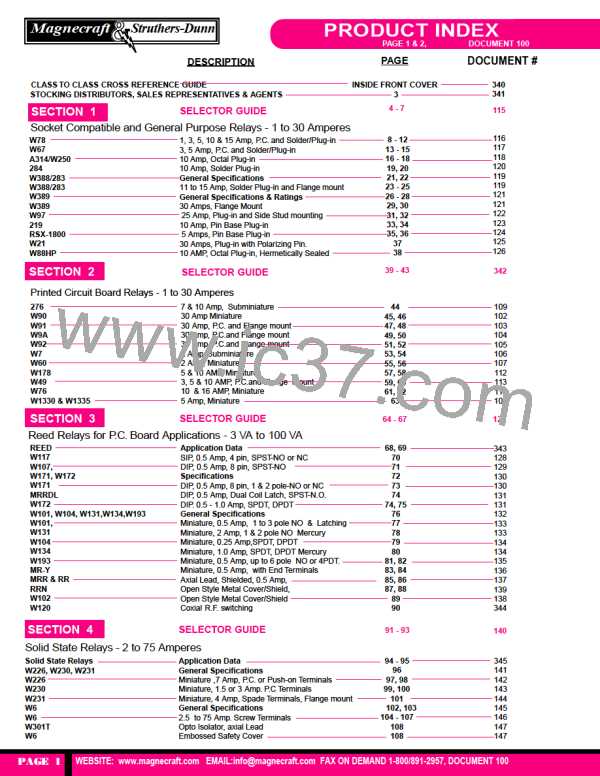DESCRIPTIONS
OF TIME DELAY
FUNCTIONS
APPLICATION DATA
TIMING FUNCTIONS (Continued)
ONE SHOT (MOMENTARY ACTUATION)
WHAT A TIME DELAY RELAY IS:
A Time Delay relay is a combination of an electromechanical output
relay and a control circuit. The control circuit is comprised of solid state
components and timing circuits that control operation of the relay and
timing range. Typical time delay functions include On-Delay, Off-Delay,
Repeat cycle, One Shot, Batch Control Interval, On-Delay & Off Delay
(Combination) and True Off Delay. Each function is explained below.
Time delay relays have a broad choice of timing ranges from less than
one second to hours. There is a choice of timing controls from calibrated
external knob, screwdriver adjusted or internally fixed timing for specific
applications. The output contacts on the electromechanical output relay
are direct wired to the output terminals. The contact load ratings are
specified for each specific type of time delay relay.
Continuous power must be applied to the input during all timing
sequences. Upon closure of external control Switch, output contacts
transfer and timing period begins. When timing period ends, output
contacts return home. Once the timing period begins, the control
switch may remain closed or opened without affecting timing. To
repeat this cycle, the control switch must be open, or opened at the
end of the timing period, and then closed to start timing period over
again.
INPUT
POWER
ON
OFF
CONTROL
SWITCH
CLOSED
OPEN
TIMING FUNCTIONS:
TRANSFERRED
HOME
OUTPUT
CONTACTS
DELAY
DELAY
ON-DELAY- (SLOW OPERATE RELAY) Upon application of power to
the input, the time delay period begins. At the end of the time delay
period, output contacts transfer. Input power must be removed to return
output contacts to home position and reset the control circuit. If input
power is interrupted before a timing period ends, timing stops. When
input power is restored , timing starts from the beginning.
Some typical Applications: Vending machines, dispensing controls,
machine control, welding control,
Special requirements for Class 211 programmable relays: To function as
an On-Delay timer, as described above, a jumper wire must be connected
in place of the external control switch.
BATCH CONTROL (INTERVAL)
Upon application of power to the input, the output contacts transfer
and the delay period begins. At the end of the time delay period, the
output contacts return home. Input power must be interrupted to
recycle timer.
INPUT
POWER
ON
OFF
TRANSFERRED
DELAY
INPUT
POWER
OUTPUT
ON
OFF
CONTACTS
HOME
DELAY
TRANSFERRED
OUTPUT
CONTACTS
HOME
Some typical Applications: Cascade starting, Air Conditioning & heating
controls, Burglar Alarms, Power Outage delay, instrument Control.
Some typical Applications: Machine control, End of process alarm,
Welding control, Photographic timing.
OFF-DELAY (SLOW RELEASE RELAY)
ON-DELAY & OFF-DELAY- (COMBINATION)
Continuous power must be applied to input during all timing sequences.
Upon closure of external control switch, output contacts transfer. Upon
opening control switch, the timing period begins. When timing period
ends, output contacts return home. To repeat this timing cycle, the
control switch must be re-closed and then opened. If input power is
interrupted during timing cycle, the output contacts return to home
position and the control switch must be closed and reopened to start the
timing from the beginning. If the control switch closes during a timing
period, timing stops and output contacts remain transferred. When control
switch is opened, timing will start again from the beginning. The timing
period can be extended, repeatedly using the control switch in this way
until the last initiated timing period is permitted to end and output contacts
return home.
Continuous power must be applied to the input during all timing
sequences. Upon closure of the external control switch, first time delay
period T1 begins. When T1 period ends, output contacts transfer.
Then, When control switch is opened, second delay period T2 begins.
When T2 ends, output contacts return home. To repeat this timing
cycle, repeat this sequence from the beginning. If the prevailing open
or closed status of the control switch is changed during either T1 or T
Timing periods, timing stops. Position of output contacts remain as they2
were. Returning control switch to its pre-changed position restarts
interrupted timing period from the beginning and normal timing resumes.
INPUT
POWER
ON
OFF
INPUT
POWER
CLOSED
OPEN
ON
OFF
CONTROL SWITCH
OUTPUT
CONTACTS
TRANSFERRED
HOME
CLOSED
OPEN
T1
CONTROL
SWITCH
T2
T1 Interrupted
T2 Interrupted
CLOSED
OPEN
OUTPUT
CONTACTS
TRANSFERRED
HOME
CONTROL SWITCH
DELAY
DELAY
OUTPUT
CONTACTS
TRANSFERRED
HOME
T1
T2
Some typical Applications: Air Conditioning, automatic Door Controls,
Lighting Controls, burglar alarms, Vending Machines, conveyor
systems, instrument control.
Some typical Applications: Cascade starting & stopping of heavy
loads, laboratory equipment, machine control
REPEAT CYCLE (FLASHER) - Upon application of power to the input,
the Off time delay Period begins. The contacts transfer at the end of the
Off time Delay Period and the ON time delay period begins. At the end
of the ON time delay period output contacts return home and OFF time
delay period begins again. This sequence will continue as long as input
power is supplied to the Input Pins.
TRUE OFF DELAY- (SLOW RELEASE)
Upon application of power to the input, output contacts transfer. The
delay period begins when power is removed from the input. If power
is supplied to input during the timing period, time is reset and time
delay period starts over again when power is removed from the input.
INPUT
POWER
ON
OFF
TRANSFERRED
HOME
INPUT
POWER
ON
OFF
ON DELAY
OFF DELAY
ON DELAY
OUTPUT
CONTACTS
OUTPUT
CONTACTS
TRANSFERRED
HOME
DELAY
OFF DELAY
Some typical Applications: Signs, Product testing, signal devices,
machine control, Signal warning devices, conveyor control.
Some typical Applications: Loss of power alarm control, Burglar
alarms.
PAGE 113
WEBSITE: www.magnecraft.com EMAIL:info@magnecraft.com FAX ON DEMAND 1-800/891-2957, DOCUMENT 100

 ETC [ ETC ]
ETC [ ETC ]